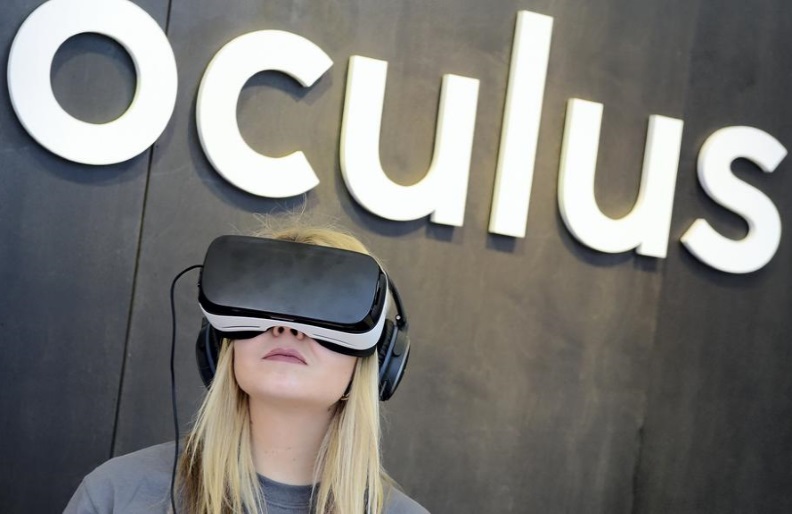Virtual reality developers promise that technology will enter our lives and make the world a better place – but few applications have so far lived up to promise.
Now healthcare could finally have found a practical use for VR technology that would take doctors inside a computer generated cancerous tumour.
Developments using the latest Facebook-owned Oculus CV-1 VR device have been on show at the European Association for Cancer Research in Madrid, offering a glimpse of how the technology could soon be used in GP surgeries and at home.
A step beyond the mobile phone-integrated devices widely seen in recent years, the latest headset and surround motion detection cameras, costing about 400 Euros, can take doctors inside tumours.
The device works in conjunction with Lonsurf, a drug to fight back against colorectal cancer.
Lonsurf Explorer is a programme designed for doctors to show how the drug works, also offering a visual illustration of the study results of a global, randomised clinical trial.
Once wearing the Oculus VR headset, the wearer can clearly see how the drug combats certain DNA strands inside the cell of a cancerous growth.
The wearer can then look around 360 degrees inside the tumor to see how the drug attaches itself to DNA strands to help dismantle the cancer.
Lara Rincon-Amor is a digital marketing specialist for Lonsurf, and said the VR application could be used to illustrate any new drug coming onto the market.
“This would work for any drug that can be visualised, to show just how it works in a practical sense,” she said.
“Some doctors have found the experience disturbing, as it is so realistic.
“It can be used for training purposes also, so it is a lot cheaper than using a physical replica of a clinical setting, and more accessible.”
Training surgeons can use the device, with headset and hand controllers linked to a computer programme, to complete a virtual surgery, such as a knee replacement.
The wearer gets real time feedback as to their progress, highlighting errors and successful procedures.
“Pressure in the handsets give the wearer the idea of how hard they have to push to make an incision, or to hammer away any loose bone,” said Ms Rincon-Amor.
“We are working on a platform for patients and practitioners to help with any kind of innovations.
“This could be central to future educating tools in the healthcare industry.
“We are doing blind studies now to see which animations work, and which ones don’t, and building an animation to help people who are maybe scared to drive, or leave the house.
“It is helpful in engaging the brain through interacting with a personalized animation someone is familiar with, so it feels real.”
Lonsurf has been proven to prolong overall survival in cancer sufferers, reducing risk of death by 32 per cent and reducing progression of the disease by 52 per cent.
A computer programme also takes the wearer through a short test in a virtual health clinic to show how to prescribe the correct dose of medication – depending on a randomly generated patient’s height and weight.
“The headset was very convincing,” said Fiorella Magani, an Argentinian Phd researcher of cancer biology at the University of Miami.
“I’m not a doctor, but I work with patients and can see how useful this would be.
“From an educational perspective, to see how the drug is acting on the tumour is very effective.
“To see the molecular targets and how it reacts with the DNA, you can really understand how different drugs can be used to directly target cancer.
“It is hard imagine how one thing binds to another just by looking at a 3D model, and you can’t get that from a textbook,
“This is a really cool way of showing how things are actually working in reality.”
Virtual reality is also being trialled to offer an immersive experience for cancer patients to reduce pain and anxiety during treatment.
It has also been used in pediatrics to distract younger patients during chemotherapy, or help relax them before having an MRI scan.
Developers of the technology are working on gloves that will respond to different materials and surfaces, so the wearer feels they are touching plastic, or wood for example, rather than the fresh air of reality.
By tailoring the software to individuals, VR could soon be used to help agoraphobes adjust to going outside into a virtual world.
To aid their progress, and add comfort, a virtual world can replicate their own home – so they are familiar with their surrounding and feel at ease, before venturing outside into a virtual landscape.
Experts hope the technology could then give them the confidence to step outside once more to experience the real world around them.
This article was originally published by The National.


One comment